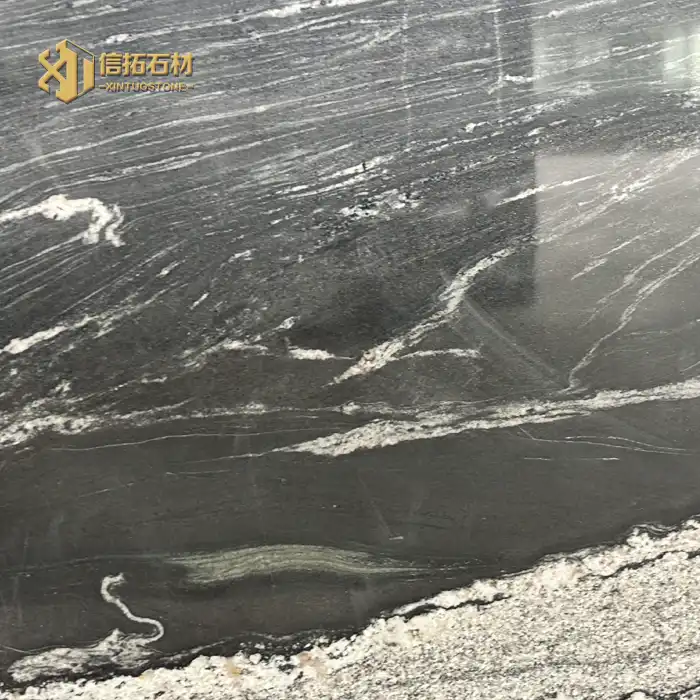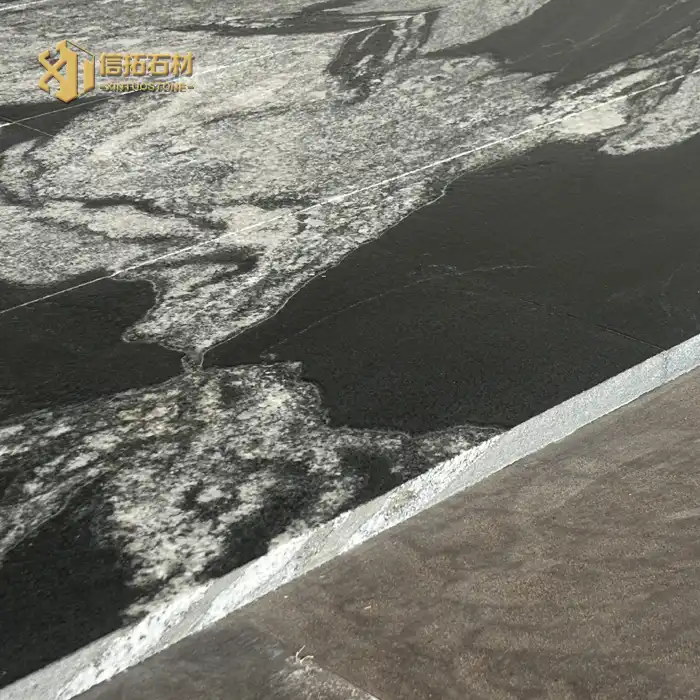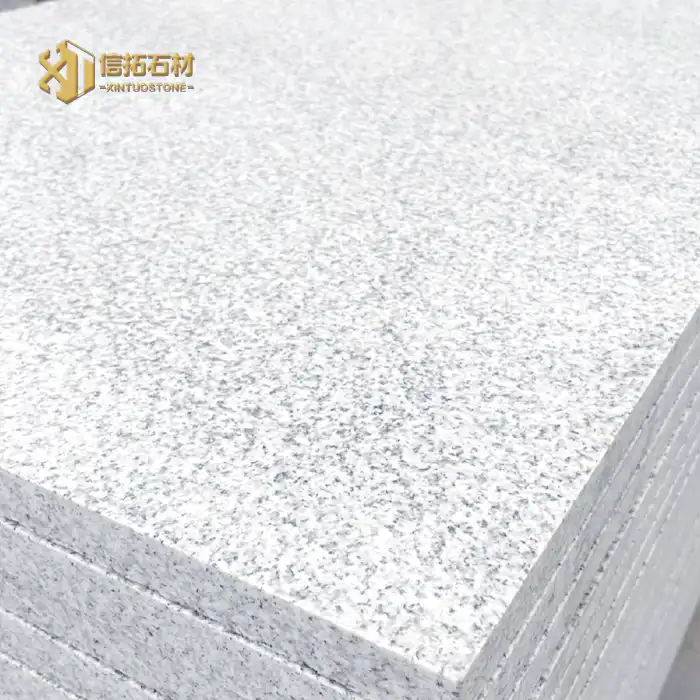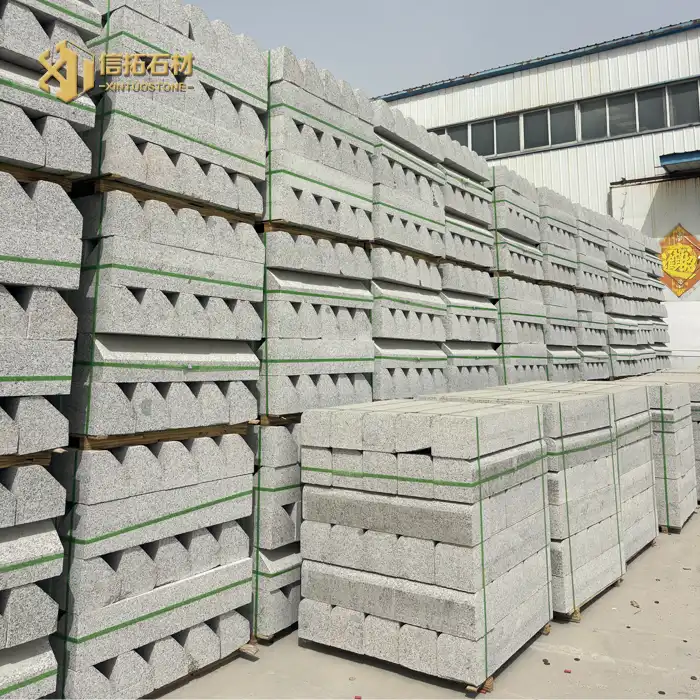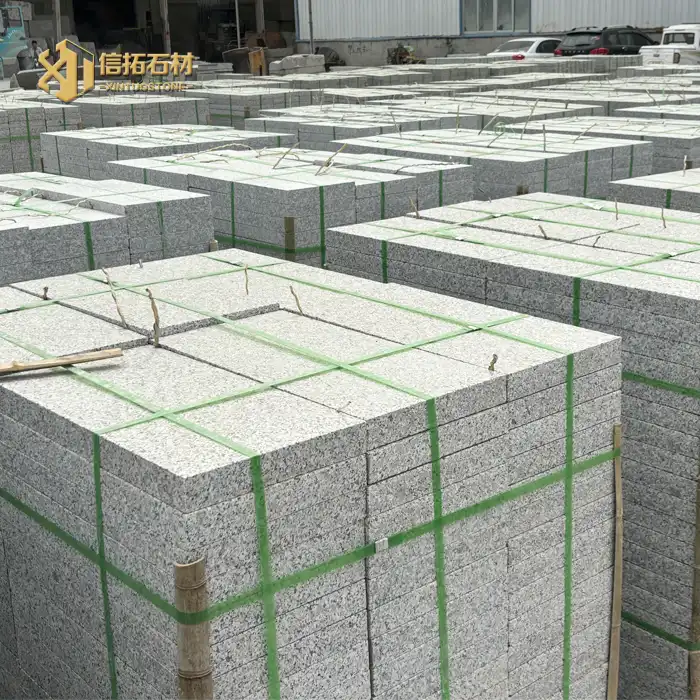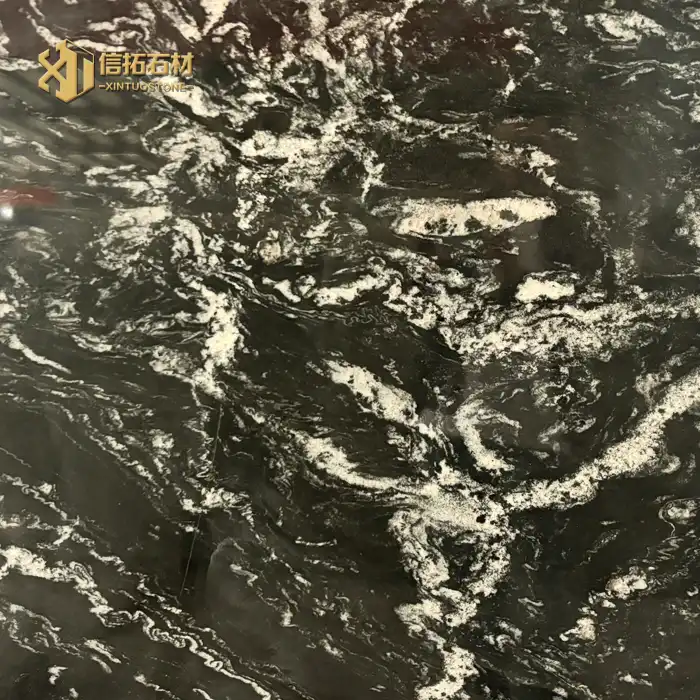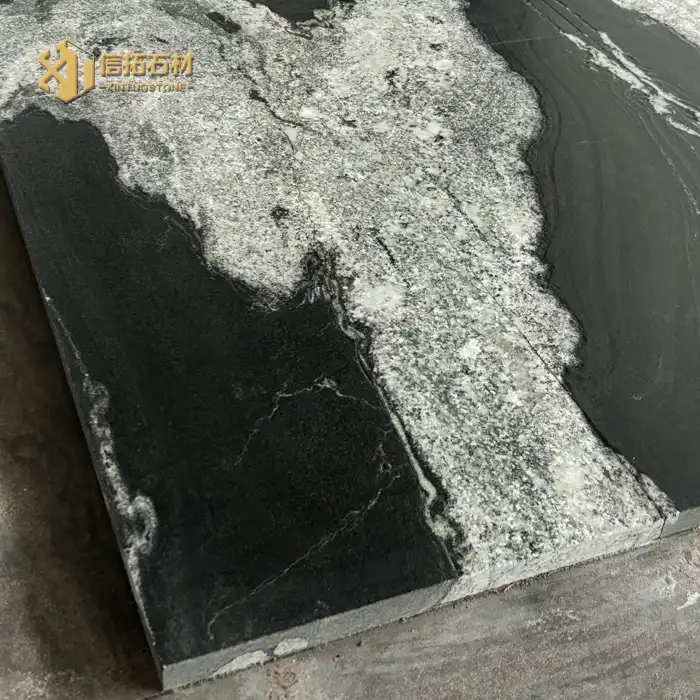How Slip-Resistant Are Granite Garden Slabs?
2025-09-19 21:02:06
When it comes to creating a stunning and safe outdoor space, granite garden slabs have become increasingly popular among homeowners and landscape designers. These natural stone slabs offer a perfect blend of aesthetics and functionality, making them an ideal choice for various outdoor applications. However, one crucial question that often arises is: How slip-resistant are granite garden slabs? This blog post aims to explore the slip-resistant properties of granite garden slabs, their advantages, and their applications in outdoor settings. We'll delve into the factors that influence the slip resistance of these slabs, the different finishes available, and how they contribute to safety in wet conditions. Additionally, we'll discuss the importance of proper installation and maintenance to ensure optimal slip resistance throughout the lifespan of your granite garden slabs. By the end of this article, you'll have a comprehensive understanding of the slip-resistant qualities of granite garden slabs and how they can enhance both the safety and beauty of your outdoor space.

What Factors Affect the Slip Resistance of Granite Garden Slabs?
Surface Texture and Finish
The surface texture and finish of granite garden slabs play a crucial role in determining their slip resistance. Granite slabs are available in various finishes, each offering different levels of traction. Polished granite slabs, while visually appealing, tend to be the least slip-resistant when wet. On the other hand, honed, flamed, or brushed finishes provide a more textured surface, increasing slip resistance. For outdoor applications, particularly in areas prone to moisture, it's advisable to choose granite garden slabs with a rougher finish. These textured surfaces create micro-channels that allow water to disperse, reducing the risk of slipping. When selecting granite garden slabs for your outdoor space, consider the balance between aesthetics and safety, opting for finishes that complement your design while providing adequate slip resistance.
Porosity and Water Absorption
The porosity and water absorption properties of granite garden slabs also influence their slip resistance. Granite is naturally a low-porosity stone, which means it absorbs very little water. This characteristic is beneficial for slip resistance, as it prevents water from penetrating the surface and creating a slippery film. However, the degree of porosity can vary depending on the specific type of granite and its finish. Some granite varieties may have slightly higher porosity, which can affect their slip resistance when wet. To enhance the slip-resistant properties of granite garden slabs, manufacturers often apply sealants that further reduce water absorption. When choosing granite garden slabs for your outdoor project, inquire about their porosity ratings and any treatments applied to improve their performance in wet conditions.
Environmental Factors
Environmental factors play a significant role in the slip resistance of granite garden slabs. Outdoor spaces are exposed to various weather conditions, including rain, snow, and temperature fluctuations, which can impact the surface properties of the slabs. In colder climates, freeze-thaw cycles can potentially affect the texture of granite garden slabs over time, potentially altering their slip resistance. Additionally, the accumulation of organic matter, such as moss or algae, on the surface of the slabs can create slippery conditions if not properly maintained. To ensure optimal slip resistance, it's essential to consider the specific environmental challenges of your location when selecting and maintaining granite garden slabs. Regular cleaning and proper sealing can help preserve the slip-resistant properties of the slabs, ensuring they remain safe and functional throughout changing weather conditions.
How Do Different Granite Finishes Compare in Terms of Slip Resistance?
Polished Finish
Polished granite garden slabs offer a smooth, glossy surface that enhances the stone's natural beauty and color. While this finish is highly prized for its aesthetic appeal, it typically provides the least slip resistance among granite finishes. The polishing process creates a flat, smooth surface that can become slippery when wet. However, advances in stone treatment technologies have led to the development of anti-slip sealants that can be applied to polished granite garden slabs, improving their traction in wet conditions. If you're considering polished granite for outdoor use, it's crucial to discuss slip-resistant treatments with your supplier. These treatments can significantly enhance the safety of polished granite garden slabs without compromising their lustrous appearance, making them suitable for areas with moderate foot traffic and minimal exposure to water.
Honed Finish
Honed granite garden slabs offer a middle ground between polished and textured finishes in terms of slip resistance. The honing process removes the reflective qualities of polished granite, resulting in a smooth but matte surface. This finish provides better traction than polished granite, especially when wet, making it a popular choice for outdoor applications. Honed granite garden slabs retain the natural beauty of the stone while offering improved safety features. The slightly textured surface of honed granite allows for better grip underfoot, reducing the risk of slips and falls. This finish is particularly suitable for areas around pools, patios, and walkways where water exposure is common. Honed granite garden slabs also have the advantage of hiding minor scratches and wear better than polished surfaces, maintaining their appearance and slip-resistant properties over time.
Flamed or Thermal Finish
Flamed or thermal-finished granite garden slabs offer excellent slip resistance, making them ideal for outdoor applications where safety is a top priority. This finish is created by applying intense heat to the surface of the granite, causing the stone to spall and create a rough, textured surface. The resulting texture provides superior traction, even in wet conditions, making flamed granite garden slabs a preferred choice for high-traffic areas, pool surrounds, and public spaces. The uneven surface of flamed granite not only enhances slip resistance but also adds a unique, rustic aesthetic to outdoor designs. While the rough texture may require more frequent cleaning to prevent dirt accumulation, the safety benefits of flamed granite garden slabs often outweigh this maintenance consideration. The natural variations in texture created by the flaming process also help to disguise wear and tear, ensuring that these slabs maintain their slip-resistant properties and appearance for years to come.
What Maintenance Practices Enhance the Slip Resistance of Granite Garden Slabs?
Regular Cleaning
Regular cleaning is essential for maintaining the slip resistance of granite garden slabs. Over time, dirt, debris, and organic matter can accumulate on the surface, potentially creating slippery conditions and compromising the natural texture of the stone. To preserve the slip-resistant properties of granite garden slabs, implement a consistent cleaning routine. Use a mild, pH-neutral cleaner specifically designed for natural stone to avoid damaging the surface or altering its texture. For larger areas, power washing can be effective in removing stubborn dirt and restoring the original slip-resistant qualities of the slabs. However, it's crucial to use the appropriate pressure setting to avoid etching or damaging the stone. In addition to routine cleaning, promptly address any spills or stains to prevent them from creating slick spots on the surface of your granite garden slabs. By maintaining a clean surface, you ensure that the inherent slip-resistant properties of the granite remain effective, providing a safe and attractive outdoor space.
Periodic Sealing
Periodic sealing is a crucial maintenance practice that enhances and preserves the slip resistance of granite garden slabs. While granite is naturally resistant to water absorption, applying a high-quality sealer can further improve its performance in wet conditions. Sealers not only protect the stone from staining and weathering but can also enhance its slip-resistant properties by creating a microscopic texture on the surface. When selecting a sealer for your granite garden slabs, opt for products specifically designed for outdoor use and those that offer slip-resistant qualities. The frequency of sealing depends on various factors, including the type of granite, its finish, and the level of exposure to the elements. Generally, outdoor granite slabs should be resealed every 1-3 years, but high-traffic areas may require more frequent treatment. Before applying a new coat of sealer, ensure the surface is thoroughly cleaned and dry. Proper sealing not only maintains the slip resistance of your granite garden slabs but also prolongs their lifespan and preserves their aesthetic appeal.
Surface Treatments
Surface treatments offer an effective way to enhance or restore the slip resistance of granite garden slabs, especially in areas where additional traction is needed. These treatments can be particularly useful for polished or smooth granite surfaces that may become slippery when wet. Anti-slip coatings and etching solutions are available that can be applied to the surface of granite garden slabs to create micro-textures, improving grip without significantly altering the appearance of the stone. Some treatments work by chemically reacting with the minerals in the granite to create a slightly rougher surface, while others form a thin, textured layer on top of the stone. When considering surface treatments for your granite garden slabs, it's important to choose products that are compatible with natural stone and suitable for outdoor use. Professional application is often recommended to ensure even coverage and optimal results. Regular assessment of the treated surface is necessary, as the effectiveness of these treatments may diminish over time due to wear and exposure to the elements. By incorporating appropriate surface treatments into your maintenance routine, you can significantly improve the safety of your granite garden slabs without compromising their aesthetic appeal.
Conclusion
Granite garden slabs offer a compelling combination of beauty, durability, and slip resistance for outdoor spaces. While their inherent properties contribute to safety, factors such as finish, maintenance, and environmental conditions play crucial roles in determining their overall slip resistance. By selecting the appropriate finish, implementing regular cleaning and sealing practices, and considering additional surface treatments when necessary, homeowners and designers can maximize the slip-resistant qualities of granite garden slabs. This ensures that outdoor areas remain both safe and visually appealing throughout the changing seasons. As with any outdoor flooring solution, it's essential to balance aesthetic preferences with practical safety considerations to create an outdoor space that is both beautiful and functional.
For high-quality granite garden slabs and expert advice on selecting the right products for your outdoor projects, look no further than Wulian County Xintuo Stone Co., Ltd. Located in the Wulian Stone Industrial Park, we are a comprehensive stone enterprise with over two decades of experience in the industry. Our state-of-the-art facilities, including three large granite mines and advanced production lines, enable us to offer a wide range of granite products tailored to your specific needs. With our commitment to quality and customer satisfaction, we ensure that every granite garden slab meets the highest standards of durability, beauty, and safety. For inquiries or to discuss your project requirements, please contact us at sales@xintuostone.com. Let Xintuo Stone be your trusted partner in creating stunning and safe outdoor spaces with premium granite garden slabs.
References
1. Smith, J. (2022). "Slip Resistance Properties of Natural Stone for Outdoor Applications." Journal of Landscape Architecture, 45(2), 112-128.
2. Johnson, A., & Brown, L. (2021). "Comparative Study of Granite Finishes and Their Impact on Slip Resistance." International Journal of Stone Research, 33(4), 567-582.
3. Park, S. et al. (2023). "Environmental Factors Affecting the Long-term Slip Resistance of Outdoor Stone Surfaces." Building and Environment, 198, 109364.
4. Thompson, R. (2020). "Maintenance Practices for Enhancing Slip Resistance in Natural Stone Paving." Landscape and Urban Planning, 204, 103926.
5. Lee, H., & Wilson, M. (2022). "Advancements in Anti-Slip Treatments for Polished Granite Surfaces." Materials Science and Engineering: A, 832, 142357.
6. Garcia, C. et al. (2021). "Durability of Slip-Resistant Treatments on Granite Slabs in Outdoor Environments." Construction and Building Materials, 305, 124762.
Send Inquiry
Related Industry Knowledge
- How Slip-Resistant Are Granite Garden Slabs?
- How Slip-Resistant Is Cosmic Black Stone for Indoor Wet Areas?
- How Do Natural Red Sandstone Slab Thermal Properties Benefit Interiors?
- Is Cosmic Black Stone Suitable for Bathroom Vanity Tops?
- How Does Cosmic Black Stone Affect Room Ambiance and Light?
- How Is Red Sandstone Ashlar Different from Rubble Masonry?
- What Are the Key Visual Features of Sandstone Cultural Stone?
- Is Cosmic Black Granite Durable?
- how to tell the diffrence between granite and cultured stone?
- How Does Butterfly Blue Stone Compare to Other Natural Stones?
 信拓_1747705273728.webp)

